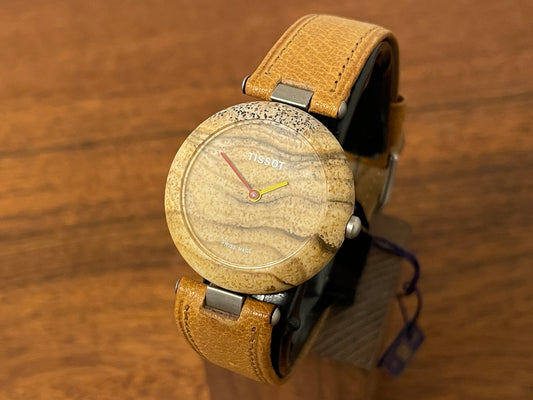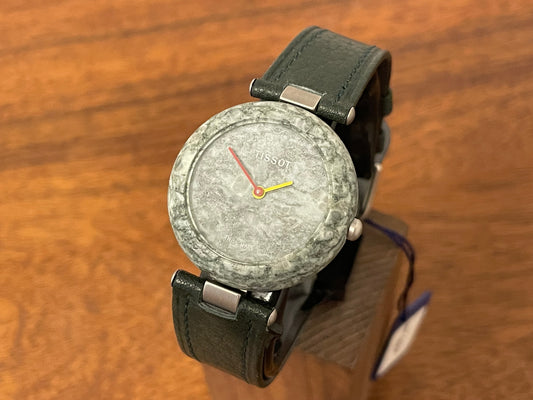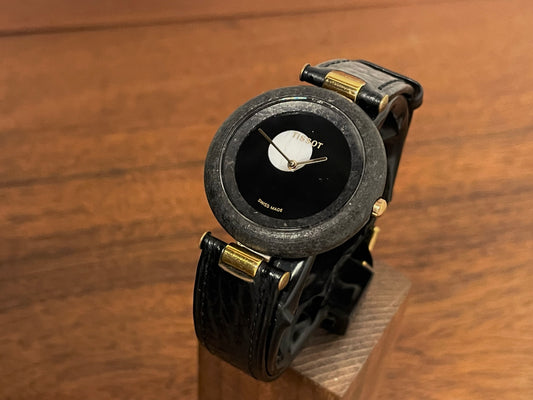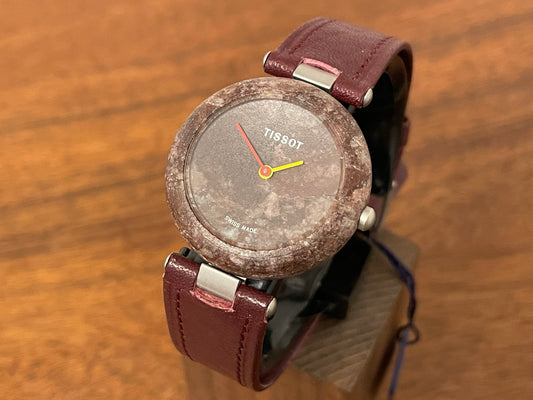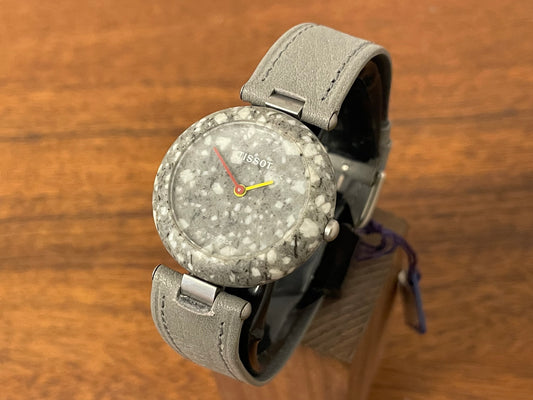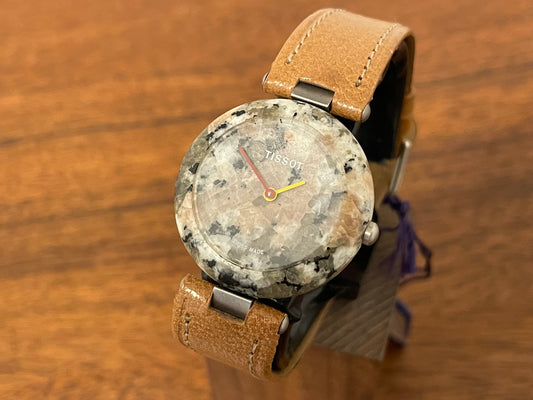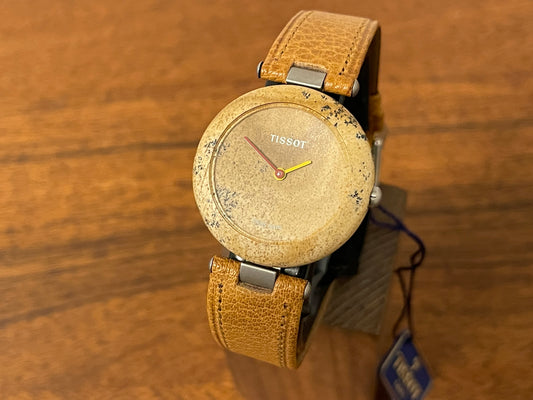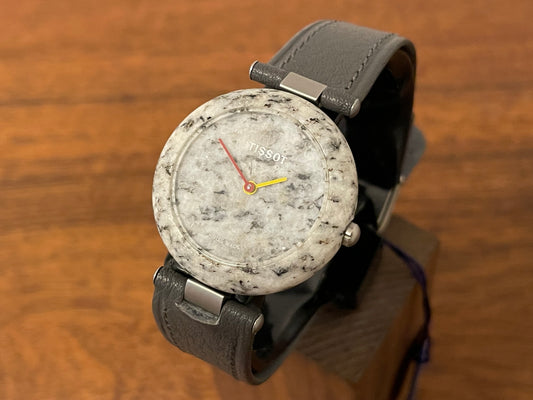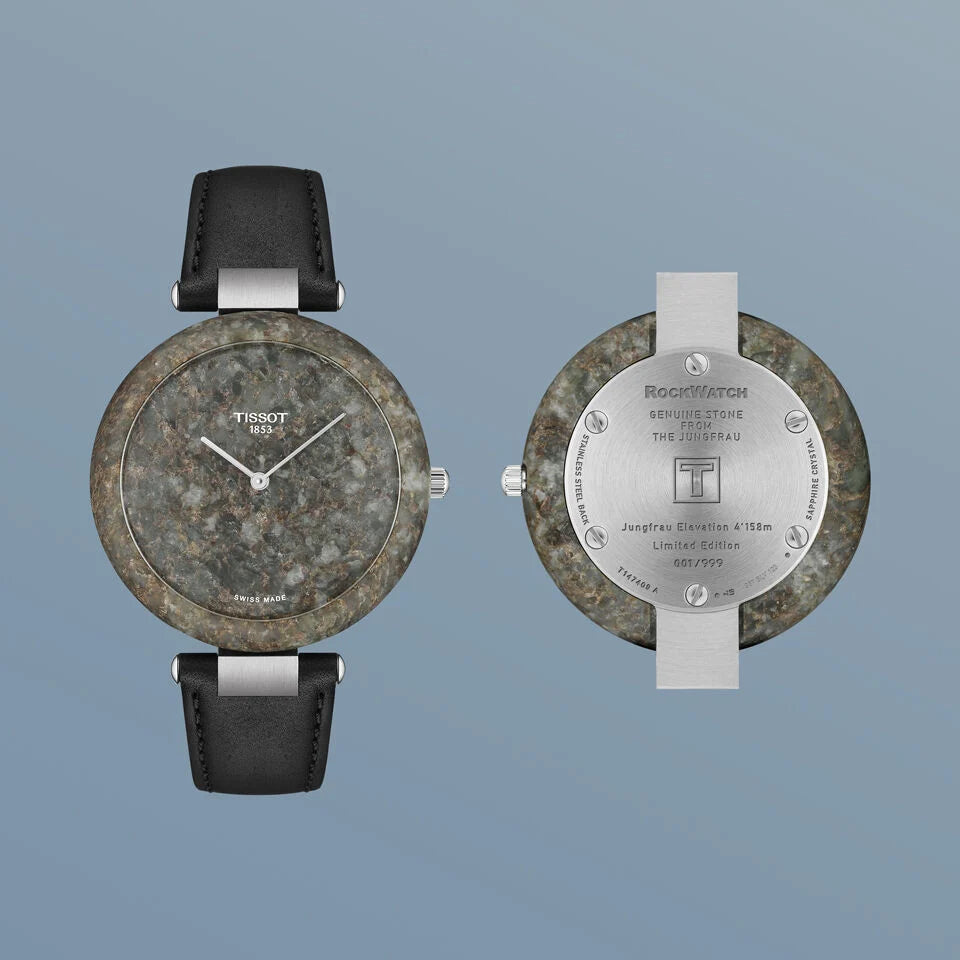The Tissot RockWatch is more than just a watch. Introduced in the 1980s, it stood out for its innovative use of natural materials and bold design. Decades later, in 2025, Tissot brought the RockWatch back as a limited edition, showing that its unusual charm still resonates today. To understand why this comeback matters, let’s look at the unique story of this iconic timepiece in 8 intriguing facts.
-
1. Conceptual birth
The RockWatch was born from a groundbreaking concept envisioned by Ernst Thomke, the creative force behind Swatch. The idea? To craft a watch entirely from stone, a bold and unconventional choice. This innovation wasn’t just about aesthetics; it represented Tissot’s determination to redefine what a timepiece could be. By embracing natural materials, the brand made a statement about sustainability and individuality, with no two watches exactly alike. The RockWatch wasn’t merely a watch; it was a wearable symbol of creativity, craftsmanship, and experimentation during a transformative era for the industry.
-
2. A product of crisis
The 1980s were tough for traditional watchmakers. The Quartz Crisis, driven by the rise of affordable quartz watches, shook the industry. Tissot needed something extraordinary to stay relevant—and the RockWatch became their answer, combining heritage with innovation.
-
3. Development time
From concept to market, the RockWatch took only six months to develop. This speedy timeline was crucial for Tissot to capitalize on the emerging trends and consumer demands of the era.
-
4. Natural materials
The RockWatch cases were crafted from Swiss granite sourced from the Alps, each piece unique in color and pattern. Later models featured stones from around the world, including Italian lapis lazuli and Australian pink rhodonite.
-
5. Innovative construction
Milling stone into watch cases was no small feat. Specialized machinery and techniques were developed to handle the delicate process, ensuring the durability and aesthetic appeal of each RockWatch. Tissot's engineers and craftsmen had to innovate new methods to overcome the challenges posed by working with stone, from selecting the right types of stone to perfecting the cutting and polishing techniques.
Each RockWatch thus became not just a timepiece but a testament to Tissot's commitment to innovative engineering and meticulous craftsmanship. These advancements in construction also set a new standard in the watch industry, influencing subsequent designs and materials used in luxury timepieces worldwide.
-
6. Commercial success
Launched in 1985, the RockWatch was an instant hit, particularly in the American market where it helped Tissot regain prominence. Its distinctive appearance and marketing prowess garnered significant attention.
-
7. Design features
Inspired by Swiss hiking trail markers, the RockWatch featured bold hour and minute hands in contrasting colors—initially red and yellow, later green and black—ensuring legibility against the stone dials.
-
8. Expansion and variants
The success prompted Tissot to expand the RockWatch line, introducing larger models and experimenting with different stones and minerals, broadening its appeal to diverse tastes and preferences.
-
The Return of the Tissot RockWatch
In 2025, Tissot reintroduced the RockWatch as a limited-edition revival, forty years after its original debut. The reissue carries the official reference T.147.409.96.510.00 and is limited to 999 individually numbered pieces worldwide.
One of the most noticeable updates is the new 38 mm case. This is a significant increase compared to (neo-)vintage RockWatches, which were offered in smaller sizes of 23 mm, 30 mm, and 33 mm. The larger proportions make the RockWatch more in line with modern preferences, while a growing number of collectors are returning to smaller, more classic case sizes.
Honoring the original idea, the reissue uses genuine granite from the Swiss Alps (sourced during the Jungfrau tunnel renovation) for the case and dial, preserving the essence of wearing a piece of stone on your wrist. The original model featured a red minute hand and yellow hour hand, while the new edition has both hands in silver, giving it a minimalistic, understated appearance. Tissot has also upgraded the watch with a sapphire crystal with anti-reflective coating and refined finishing to meet today’s standards of durability and comfort.
By marrying the bold innovation that helped Tissot stand out during a challenging era with contemporary design, this revival goes beyond nostalgia. It shows that originality and creative vision can still make a watch remarkable today.



